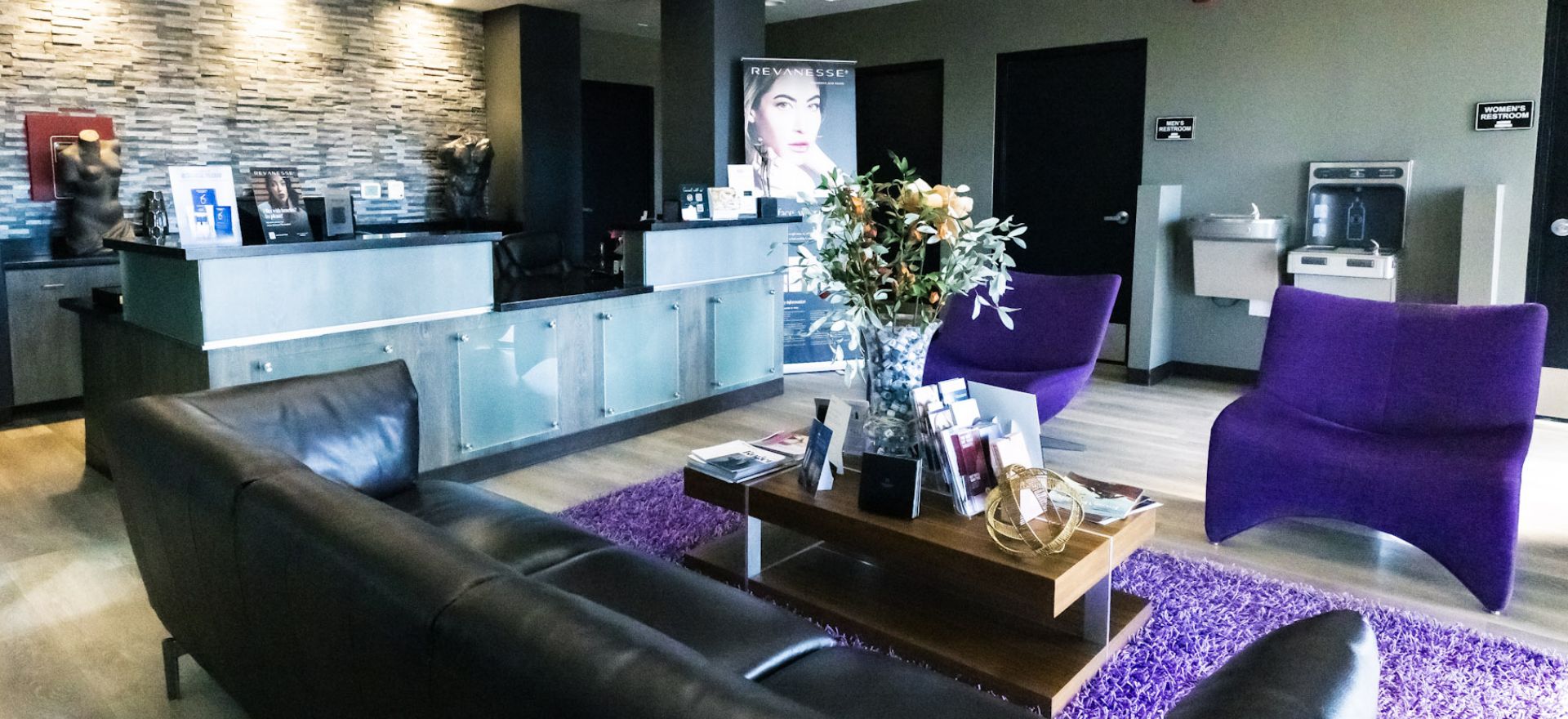February 13, 2025 | 6 minute read

Liposuction is a minimally invasive body contouring procedure that involves very small incisions. Small incisions result in small scars, but scars nonetheless. This blog will discuss what patients can expect from liposuction scars: what they look like, where they are, how to avoid them, and how to treat them.
Does Liposuction Leave Scars?
Liposuction remains one of the most popular and impactful cosmetic procedures offered, as it can be applied nearly anywhere on the body for a slimming, cohesive result. It is often used in conjunction with other procedures, such as a tummy tuck or a Mommy Makeover, to smooth the surrounding areas of the body for a more natural look and is effective at treating stubborn pockets of fat in even the most surprising areas of the body.
Although liposuction is definitely a surgical procedure, it is often considered minimally invasive, as the process involves very few incisions—and small ones at that. But does liposuction leave scars?
It sure does. Any time an incision is made on the body, no matter how small, there is the possibility of scarring, and liposuction is no exception. The liposuction process is as follows:
- The surgeon makes small incisions (about a quarter inch, or the width of your pinky finger)
- Through the incisions, they insert a long tube called a cannula
- Fat is carefully suctioned out through the cannula
- The incisions are closed with sutures
What Kind of Scars?
Don’t lose hope—although scarring is likely after liposuction, scars are usually very light and small and, with proper care, can fade over time. The type of liposuction scars you end up with depends on how your body naturally responds to injury, for if you are susceptible to keloids, you may have darker, raised scars.
Most commonly, liposuction scars are the same length as the incision: a quarter of an inch, maybe more or less, depending on the type of cannula and technique used. Your liposuction scars may appear like small indents in the skin, small freckles, or marks of slight hyperpigmentation.
Because incisions are essentially controlled injuries to the skin, the body responds by sending collagen to heal the area. Injuries are also protected through inflammation, which can cause residual pigmentation called post-inflammatory hyperpigmentation. This can cause the scars to be a slightly darker color than the rest of your skin.
Where Are Liposuction Scars?
Your liposuction scars will be located near the treatment area so that your surgeon can appropriately reach the area with the cannula. Aesthetics are obviously important, however, so your surgeon will place incisions in the best possible location that not only reaches the treatment area but is easily concealed in case you do develop scars.
Common liposuction scar locations may be like the following:
- For upper arm liposuction, the incision may be under the arms
- Leg liposuction may have incisions placed in the groin crease, in the inner thigh folds, or in the back of the legs
- Stomach lipo, the incisions are usually on the flanks or low near the pubic bone
- Waist liposuction is usually placed low enough to be covered by pants
Bear in mind that each surgeon will have a preferred technique and incision placement, so it’s always best to discuss with your surgeon where they plan to place incisions. You should also discuss your concerns about scarring with your surgeon so they can help you plan ahead with proper scar care after your procedure.
Caring for Lipo Scars
Although scars are not ideal, they are a normal part of the healing process. There are plenty of things you can do to prevent scars and treat them once they’ve formed. Once your sutures are removed or dissolved and the incision has closed, you can start advanced scar care, but initial scar care begins on day one. Your scars may continue to change and improve or develop within the first two years after your surgery—after that, they are permanent and unlikely to change. Your first two years are crucial! Here’s how you can help.
The way your scars develop is determined almost immediately after your surgery. You can start minimizing scar formation by applying antibacterial ointments or petroleum jelly to keep your skin moist. Change bandages daily to keep the skin clean and prevent infection, and always avoid picking at or rubbing scabs because this will cause darker scars. Sun exposure should always be avoided in the area.
Later on, once your incision has sealed, you can begin other scar treatments like topical corticosteroids and antihistamine creams to help with healing and the development of scars. These also help reduce itching, which will help you leave the area alone and not scratch or pick. Silicone sheets are very effective at healing scars and keeping them hydrated. The sheets should be worn as directed, usually 12 hours a day for weeks. Topical silicone creams are newer tools for scar care, and they are applied to the area and quickly dry into a thin sheet that covers the area.
For older, more developed, raised, or keloid scars, corticosteroid injections are a possible treatment. These injections help reduce inflammation, itching, and pain. Alternatively, collagen or synthetic injections can be used to fill in indented scars, instantaneously smoothing the area and making it less noticeable.
Laser resurfacing treatments are another way to lessen the appearance of dark or raised scars, which precisely remove layers of skin to reveal softer, smoother skin underneath.
Overall, liposuction and treatments like 4D liposculpture are incredibly effective body contouring procedures that have many more benefits that outweigh the risk of scarring for many people, especially considering all the ways above that can improve and prevent scarring.
Want to Learn More About Liposuction in El Paso, TX?
Choosing an experienced liposuction and liposculpture surgeon like Dr. G can help alleviate your concerns about scarring, as he can advise you on where your liposuction incisions will be and how he recommends you deal with scar care. If you want to find out how Dr. G can help you construct the body of your dreams with cutting-edge liposculpture treatments in El Paso, call today at (915) 600-2639 or fill out the contact form to get started.

